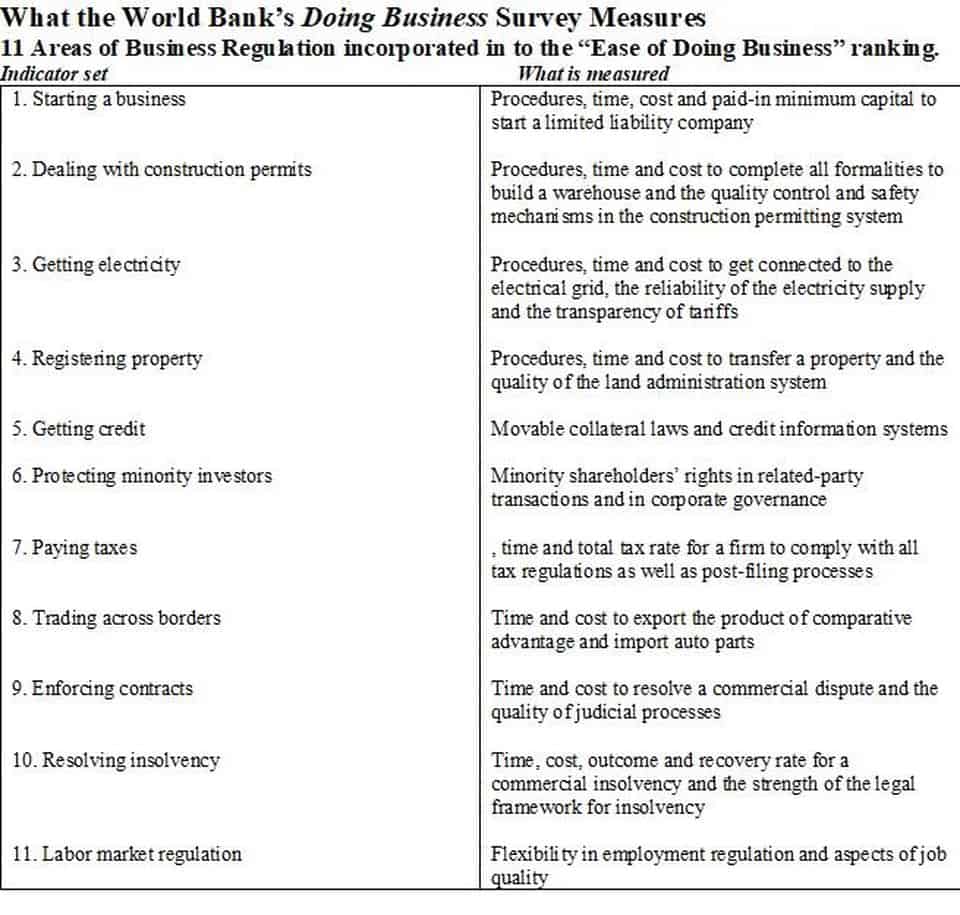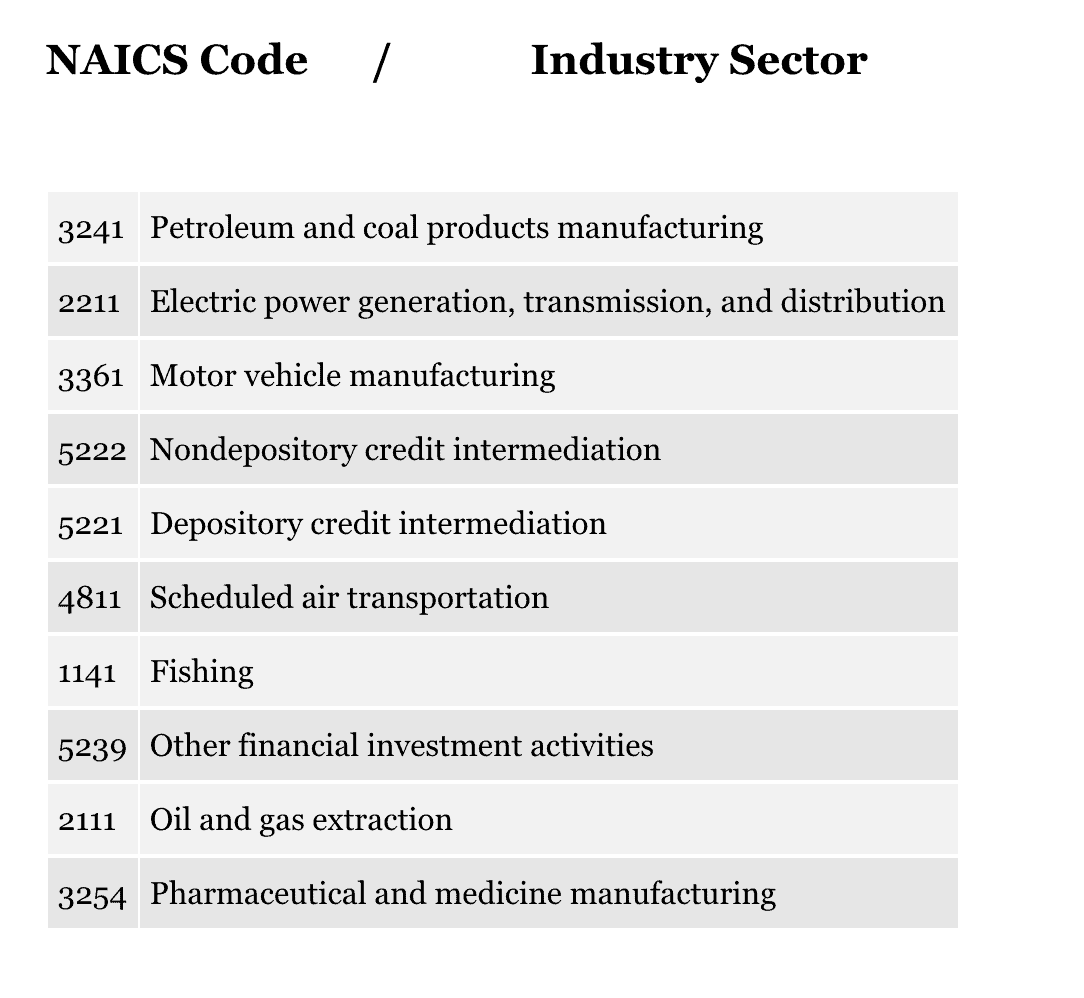What do Scholars Say About the Empirical Relationships Between Regulation and Entrepreneurship?
In the Fraser Institute’s new volume Demographics and Entrepreneurship: Mitigating the Effects of an Aging Population, chapter authors observe that the more red tape and regulation, the less entrepreneurship and innovation.
Not a surprise. It’s Captain Obvious stuff that if getting things done requires too many steps, fewer take business risks. But the intricacies of the relationships matter and should be of interest to policymakers worldwide.
Earlier on Forbes I gave an abbreviated version of this pitch and launched into a wish-list of sorts for further research and Ph.D. dissertations if I had an infinite lifespan. Here, though, I thought it would be worthwhile to circle back, and to present more detail on what some of the best researchers have had to say about the empirical data, once we go beyond the 30,000-foot-level conceptual linkages between regulation and entrepreneurship and characteristics of the entrepreneur.
Sure, there are counterintuitive examples one finds to the maxim that, conceptually, increases in regulatory restrictions reduce entrepreneurship. But these may not seem quite as counterintuitive when rent-seeking and political predation are taken into account.
It is emphatically the case, too, that there are inherent problems in measuring the effect of regulation on entrepreneurship, such as difficulties in holding constant moderating and mediating variables that can influence the empirical relationship; we can’t measure regulatory costs, as I stress in the subtitle of a working paper, “Tip of the Costberg: On the Invalidity of All Regulatory Cost Estimates, and the Need to Compile Them Anyway.” (If we could, central planning could work, and that’s just crazy.)
However, the attempt to measure and to learn matters for good governance. As the World Bank stated in Doing Business 2017: Equal Opportunity for All, “[Hernando] de Soto’s conjecture, which turned out to be right, was that measuring and reporting would create pressure for improvements in the efficiency of government.”
The exploration of the interaction between regulation and entrepreneurship got a boost over a decade and a half ago, in the 2002 article “The Regulation of Entry” by Simeon Djankov, Rafael la Porta, Florencio Lopez-de-Silanes and Andrei Shleifer. This prominent contribution examined 85 countries, and found that freer countries tend to have less onerous business entry regulation:
Countries with heavier regulation of entry have higher corruption and larger unofficial economies, but not better quality of public or private goods. Countries with more democratic and limited governments have lighter regulation of entry. The evidence is inconsistent with public interest theories of regulation, but supports the public choice view that entry regulation benefits politicians and bureaucrats.
The Djankov et al study did not examine naked corruption, but rather “all procedures that are officially required of an entrepreneur in order to obtain all necessary permits and to notify and file with all requisite authorities” along with official costs and time (pp. 5-6). What are these sorts of procedures one might find required for startup? Headings from the study’s highly detailed list (p. 11) illustrate:
- Screening procedures
- Tax-related requirements
- Labor/social security-related requirements
- Safety and health requirements
- Environment-related requirements
Djankov et al. tell us: “For an entrepreneur, legal entry is extremely cumbersome, time-consuming, and expensive in most countries in the world” (p. 4), and that “better governments regulate entry less” (p. 5). The typical research tool in such studies is regression analysis, or, the examination of the effects that specific “independent” variables (like the list of procedures and permitting in Djankov) have on the “dependent” variable(s), such as, for present purposes, some gauge or proxy of entrepreneurship (or innovation).
In a later related 2006 study, Leora Klapper, Luc Laeven and Raghuram Rajan found an inverse relationship between regulation and entry in European limited-liability firms in industries featuring high entry. More procedures = fewer new businesses. Furthermore, Klapper et al. note that regulation induces larger entrants and lower productivity among incumbent firms. A result like that conforms to an interpretation of regulation being motivated by disadvantaging smaller firms rather than by public interest concerns, as the “public choice” school of economics maintains. As they summarize:
We find that costly regulations hamper the creation of new firms, especially in industries that should naturally have high entry. These regulations also force new entrants to be larger and cause incumbent firms in naturally high-entry industries to grow more slowly.
Peter T Calcagno and Russell S. Sobel, focusing on the relative sizes of firms, note the range of studies on business climate and the number of firms. They demonstrate that higher levels of regulation hurt precisely the smallest firms. Regulatory burdens could induce firms to stay smaller, such as through outsourcing regulated functions, and to maintain threshold sizes to remain officially exempt from regulations. On the other hand, regulation may cause establishments to be somewhat less small, to the extent it operates as a fixed cost.
Consistent with such findings like these, Donald Bruce, John A. Deskins , Brian C. Hill and Jonathan C. Rork examined the effect of U.S. state business activity metrics (such as annual counts of firms, establishments, and employees, the dollar value of payroll expenses, and annual births and deaths of establishments) on gross state product between 1988 and 2002. They tested linkages between state entrepreneurial activity and overall business conditions while “account[ing] for the simultaneity of business activity and overall growth.” Such business conditions would include tax-related concerns as well as regulation, and the study found all such elements matter to entrepreneurship. As one might surmise, “overall economic growth is faster when the net birth rate of new small firm establishments is positive.”
In the wake of these and other pioneering reports, James Bailey and Diana Thomas (2015) remarked, “the institution that theoretically matters most for the creation of new firms is regulation of entry.” Their research sought an estimate that doesn’t just get at the “effect of regulation of entry on naturally high-entry industries only” but rather a “better estimate of the absolute effect of regulation on new firm creation and employment growth by industry” (p. 4).
Bailey and Thomas find a half-percent reduction in firm startups (and a similar reduction in hiring) results from a 10 percent increase in regulatory intensity (as measured by the Mercatus Center RegData index) over a 1998-2011 interval (p. 11). The authors find no statistically significant effect on firm deaths, though, supporting the familiar notion that incumbents benefit while new firm births decline (p.12).
Perhaps today’s most well-known survey is the wide-ranging annual World Bank Doing Business report noted above. With roots in Djankov and colleagues’ work, the compilation ranks nations on business climate with respect to “regulation that affects small and medium-size enterprises, operating in the largest business city of an economy.” The report also presents “quantitative indicators on the regulations that apply to firms at different stages of their life cycle” (p. 13).
Embracing Hernando de Soto’s basic contention that disclosure matters when it comes to holding officials accountable, the report underscores the dramatic effect the number of steps involved in starting a business can have on a comparative basis internationally. In Argentina compared to Georgia, for instance (p. 1):
…it takes 14 procedures to start a new business, double the global average of just seven. So it is perhaps unsurprising that there are only 0.43 formal new businesses per 1,000 adults in Argentina. By contrast, in Georgia—where three procedures are sufficient to start a business—there are over 5.65 formal new businesses per 1,000 adults.
There are 11 core quantitative measures of business regulation examined in Doing Business (from Table 2.1, p. 14). These appear in the table nearby:

Given this new spotlight, nations now seek to do better, and “compete” with one another on fostering an entrepreneurial environment: “Doing Business has recorded over 2,900 regulatory reforms across 186 economies since 2004. Europe and Central Asia has consistently been the region with the highest average number of reforms per economy; the region is now close to having the same good practices in place as the OECD high-income economies” (World Bank, 2017, p. 1).
In sub-Saharan economies’ Doing Business rankings are currently improving at a rate triple that of OECD established wealthy economies. This is attributed to “a doubling in the number of countries in Sub-Saharan Africa that are engaged in one or more business regulatory reforms—a total of 37 economies in this year’s report” (World Bank, 2017, p. v.). Overall, “A record 137 economies around the world have adopted key reforms that make it easier to start and operate small and medium-sized businesses,” the World Bank says.
Given its scope and depth, the Doing Business Index has become the basis of much of today’s global research on entrepreneurship (p. 22):
Starting a business [that is, procedures, time and cost involved] is the indicator set most widely used, followed by labor market regulation and paying taxes. These indexes typically combine Doing Business data with data from other sources to assess an economy along a particular aggregate dimension such as competitiveness or innovation. The Heritage Foundation’s Index of Economic Freedom, for example, has used six Doing Business indicators to measure the degree of economic freedom in the world. Economies that score better in these six areas also tend to have a high degree of economic freedom. Similarly, the World Economic Forum uses Doing Business data in its Global Competitiveness Index to demonstrate how competitiveness is a global driver of economic growth.
A particularly useful roundup of 13 empirical analyses (all published between 2005 and 2014) by Ana Maria Zárate Moreno on “Regulation, Innovation & Entrepreneurship” notes over half (55%) used the World Bank’s Doing Business regulatory indicators and the “related” Djankov et al. measures, as independent variables. Related economic freedom metrics also feature prominently in scholarly and public policy analyses. On the dependent variable side representing entrepreneurial activity (such as change in the number of firms, proportion of new firms, birth/death rates), Zárate Moreno (p. 5) notes half employ the above-referenced Global Entrepreneurship Monitor (GEM)’s Total Entrepreneurial Activity (TEA) and incorporate its components linking entrepreneurship to opportunity and necessity (these were discussed in the above-referenced column on conceptual linkages between regulation and entrepreneurship).
Not every category of regulation gets captured, or course, even in the grandest of surveys. Doing Business appears to underplay safety and environmental regulatory burdens, which are major concerns in advanced economies. However, those regulatory classes that do get surveyed lead to still deeper layers, like peeling an onion, and analyses can become extraordinarily detailed.
For example, the “quality of judicial proceedings” metric under “Enforcing contracts” in the Doing Business table above gets broken into several additional categories. Likewise, data on the World Bank’s labor market regulation contains several sub-categories within the classifications Hiring, Working Hours, Redundancy, and Job Quality (the latter contains social policy goals favorably viewed by Doing Business (p. 161)). Doing Business also gauges government hurdles to social and economic concerns such as women getting hired or starting businesses (p. iv.) and whether they face additional requirements in starting new businesses. The survey also attempts to gauge progress in reducing income inequality (p. v.).
Naturally, not all are on board with the “explicit link made by Djankov et al … between the speed and ease with which businesses may be established in a country and its economic performance” (André Van Stel, David J. Storey and A. Roy Thurik, 2007). Some left of center academics are more inclined to blame big business and Chicago School economics’ hands-off policies rather than regulation for declines in small business vibrancy. This strand of thought sees the public-interest spirit of regulation as intact. For example, Claudia Alvarez and Amorós, Jose Ernesto Amorós and David Urbano, in a study of 49 countries between 2001 and 2010, find “a positive influence of government spending and entrepreneurship legislation on entrepreneurial activity,” and that “regulations may have different impacts on entrepreneurship according to the country’s economic development.” This analysis still concluded, however, that “developing economies should rationally organize their formal institutions in order to remove unnecessary barriers and controls that obstruct entrepreneurship activities.”
Other studies examine special cases of regulatory impacts on entrepreneurship. For example, a Goldwater Institute study by Stephen Slivinski found a statistically significant inverse correlation between rates of low-income entrepreneurship/startup rates and occupational licensing burdens. This research was cited in a report on occupational licensing by President Barack Obama’s Council of Economic Advisers, showing that the recognition that regulatory zeal dampens entrepreneurship sometimes crosses the left-right boundary. Indeed, one sensible prophylactic response to escalating fears of automation noted by James Pethokoukis is “eliminating excessive occupational licensing regulations that make it hard to start the sort of businesses—interior design, hair-dressing, beauty treatment—that are robot-resilient and provide a first step up the opportunity ladder.” In interrelated research findings, “providers of occupational licensing training, namely, schools, are larger and seem to be more profitable in states with more stringent occupational licensing regulation” (Marek Zapletal 2014). Related to such findings, housing regulation, land use laws and occupational licensing (among other things) impede mobility and thus economic growth, as well as employment and entrepreneurship (David Schleicher 2017). Finally in this respect a 175-nation analysis of entry regulations by Patrick A. McLaughlin and Laura Stanley finds regressive effects and artificial aggravation of income inequality.
Unsurprisingly, many researchers regard economic freedom even more widely construed as playing the central role in entrepreneurship. Joshua Hall, Robert A. Lawson and Saurav Roychoudhury assert that “the ability of people to freely trade, enter into contracts, and start businesses in a system of private property and the rule of law is crucial for productive entrepreneurship.” As a wider gauge, according to Steven W. Bradley and Peter Klein, “Economic freedom incorporates, and is broader than related concepts and measures such as the ease of doing business … and the origin of a country’s legal system [such as the World Bank index]” These authors characterize economic freedom as “a summary measure capturing the freedom to engage in economic activity without undue restrictions or subsidies. The institutions, or ‘rules of the game,’ most strongly associated with economic freedom include property rights, the rule of law, open markets, and incentives to innovate.” (Bradley and Klein, p. 211).
The collaborative (Cato Institute, Fraser Institute, and dozens of other think tanks) Economic Freedom of the World report (James Gwartney, Robert Lawson and Joshua Hall, ) exemplifies this institutional approach, wherein many dozens of underlying component data points contribute to assessments of economic freedom (and in turn rankings of nations) in five key areas:
- Size of government: expenditures, taxes, and enterprises;
- Legal structure and security of property rights;
- Access to sound money;
- Freedom to trade internationally; and
- Regulation of credit, labor, and business.
Further study is likely to identify more reliably which specific regulations in which specific industries most impede entrepreneurship. Zárate Moreno noted that, with respect to innovation, regulations’ effects vary among sectors and industries, as well as over the short and long run. An illustration of this phenomenon for the U.S. is provided by Patrick McLaughlin and Oliver Sherouse, who examined the number of “restrictions” (as proxied by terms representing mandates or prohibitions expressed in the Code of Federal Regulations) to identify the top 10 most heavily regulated sectors by North American Industry Classification System. The McLaughlin and Sherouse findings for the most heavily regulated are as follows:

Unsurprisingly, the global environment for entrepreneurship presents a mixed picture. According to the World Bank, “OECD high-income economies have on average the most business-friendly regulatory systems, followed by Europe and Central Asia” (2017, p. 6). On the other hand, there has been a slowdown in some of these wealthier economies. In terms of the global “ecosystem” for entrepreneurship, “both the factor- and efficiency driven groups report several unfavorable conditions. In factor-driven economies, R&D transfer, entrepreneurial finance and internal market burdens/entry regulations are highlighted as areas constraining entrepreneurship; in efficiency-driven economies, R&D transfer also features, as well as government policy, and taxes and bureaucracy” (World Bank, p. 11).
Importantly, academics have taken an interest in the boundary between scholarly research and practical entrepreneurial training, which should inform and foster economic liberalization efforts. For example, Guatemala’s Francisco Marroquín University, through the Global Entrepreneurship Monitor project, maintains a research venture aimed at making evident the negative effect of over-regulation on the entrepreneurial process. Their efforts include furthering research into how labor market regulation and other growth constraints affect formal job creation in small and medium-sized enterprises (commonly called SMEs). In the United States, the University of Louisville’s John H. Schnatter Center for Free Enterprise engages in “research and teaching that explores the role of enterprise and entrepreneurship in advancing the well-being of society.”
After all, academics can be entrepreneurial, too!
Note: This is a companion piece to my “What Do Scholars Say About The Conceptual Relationship Between Regulation And Entrepreneurship?,” and is in part based on my chapter in the Fraser Institute’s book Demographics and Entrepreneurship. Readers will find the authors and their chapters at the volume’s landing-page here.)
